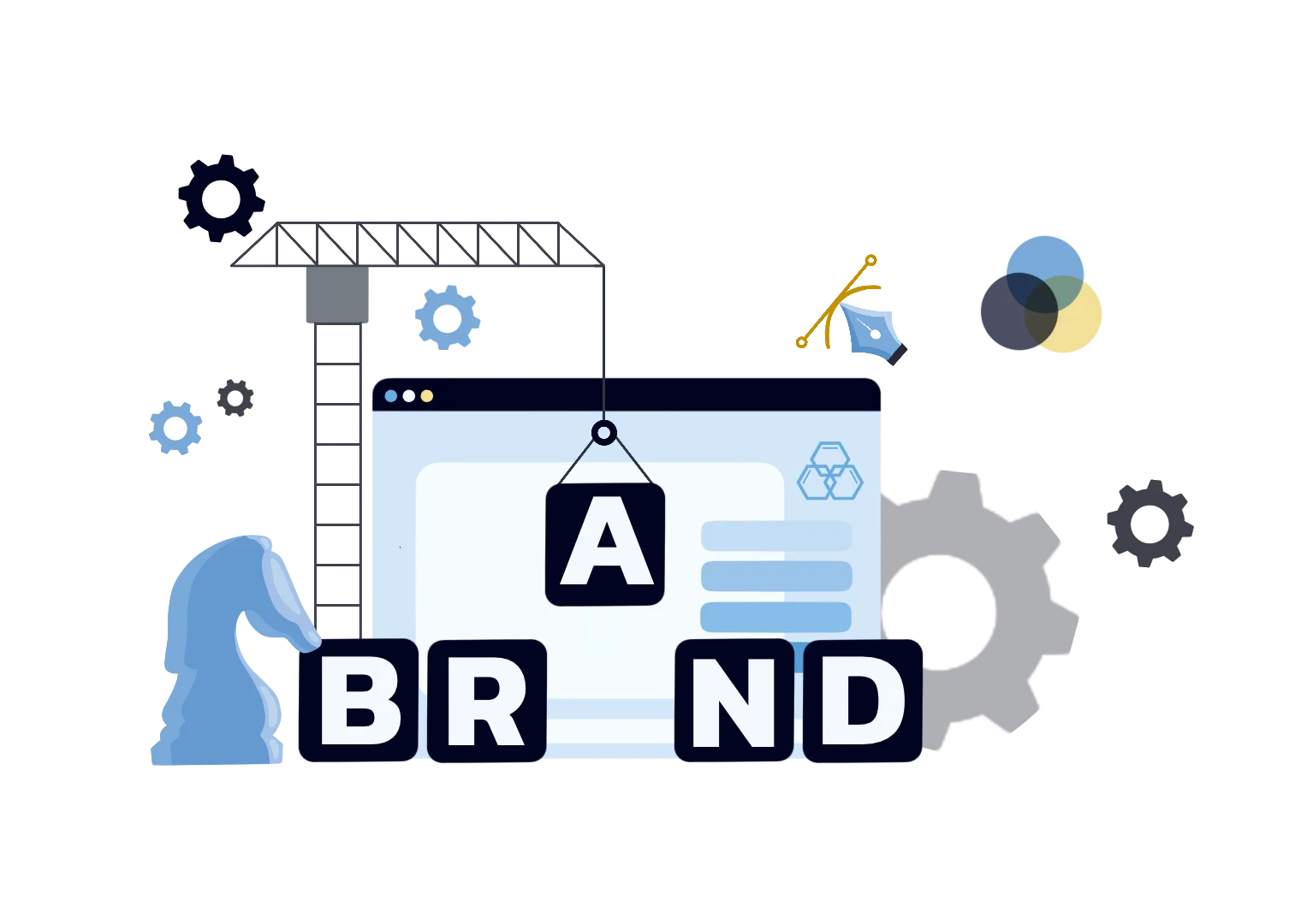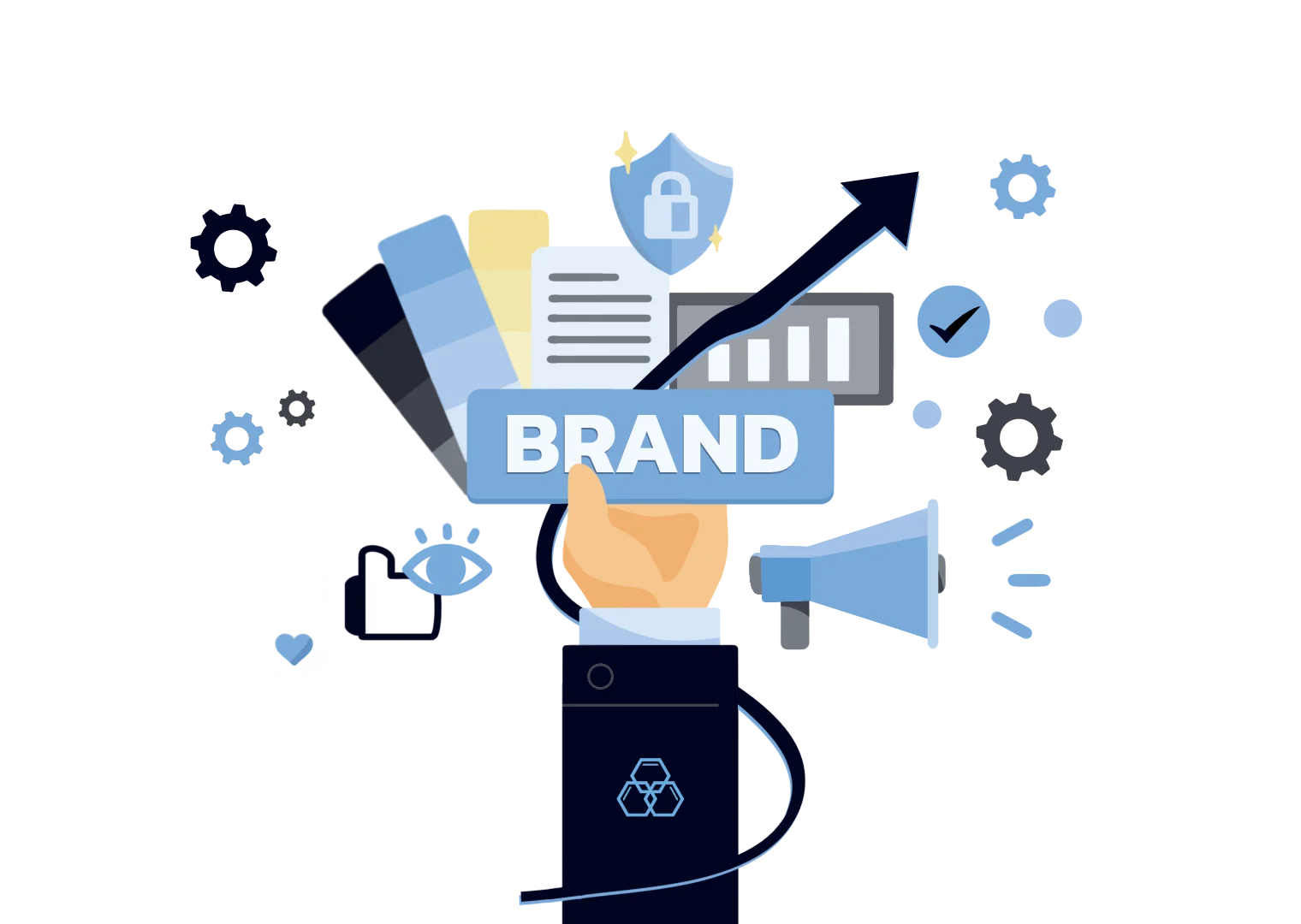As a business owner, you know that creating a visual identity is essential. After all, your visual identity should be more than just a logo - it should be an integral part of your marketing plans. But what does that mean, and how do you go about it?
This guide will show you everything you need to know about creating a consistent visual identity, from the basics to the more advanced concepts. By understanding visual identity, you can create a stronger brand for your business and stand out from the competition.
So let's get started!
What is Visual Identity?

A visual identity is a collection of visual elements that serve to represent and differentiate a brand. It's how you make prospective customers feel when they see your brand, which is why it's so important to have a consistent look and feel.
Almost everything we do and say communicates something about our brand. From the colors we choose to the words we use, our visual identity reflects your story and how you connect with your prospective customers. It's critical to build trust and establish relationships in your marketing plans.
You should craft a visual identity to reflect your brand values and appeal to your target audience. It should have a strategic direction across your social networks, marketing materials, and website. A strong visual identity will help you build brand awareness and stand out from competitors.

Visual Identity vs. Brand Identity
Visual identity is not the same as brand identity. Brand identity is an essential part of your company, but it's not something that you can change overnight. Your visual identity evolves with your brand over time, and must be consistent across all your marketing activities and communications.
A superb graphic design plays an essential role in creating a visual identity. It takes careful planning and execution to create an identity that is unique and memorable. But the effort is worth it, as a strong visual identity can be the key to success for any business.
Why is a Strong Visual Brand Identity Important?

It builds instant recognition and trust. With a consistent and professional visual identity, your brand becomes memorable and distinguishable from your competitors. This consistency, from your website to your packaging, signals that you are reliable, fostering a sense of trust and credibility with your audience.
A distinct visual identity also helps a business to stand out in a competitive market.
Furthermore, it communicates your brand’s promise and core values at a glance. The right colors, fonts, and imagery instantly convey your brand's personality, whether you’re innovative, luxurious, or approachable. This allows you to connect with your ideal customers, building lasting loyalty.
The Key Elements of Brand Visual Identity
The design elements that visually represent your business and make it instantly recognizable are essential to creating an effective marketing plan.
A visual identity is a key to any business or individual hoping to make a mark on the internet. In a sea of social media profiles, a visual identity gives you a head start in your viral marketing efforts.
So, what goes into a visual identity? Here are the essential visual components:
Logo
For your business to succeed, you need a logo that resonates with your audience—and makes them want to buy what you're selling.
The graphic design should be distinctive and memorable, but it also needs to be versatile enough for use on every piece of marketing material you produce or license for third-party companies.
A good logo that people will always associate with your company and its products—stands out among all other similar logos! It should be simple yet memorable and convey the essence of your company's brand. It can help develop prospective customer loyalty and create a lasting impression when designed correctly.

Typography
Typography is an essential part of any visual identity. The fonts are the visual aspect of your messaging, which you use to communicate a lot about your brand, and can impact how your viewers perceive your message. Different fonts evoke different emotions, so it's essential to choose ones that align with your brand's overall tone.
For example, a playful font for a serious message might come across as tone-deaf, but a more serious font for a light-hearted message could make it seem like you're taking yourself too seriously. The bottom line is that the fonts your marketing departments use in your business strategy and marketing activities matter, so take some time to consider which ones will best represent your brand.

Color Palette
Your visual identity is people's first impression of your business, so choosing colors that communicate the right message is essential. The colors you use on your website, marketing strategy materials, and products should be cohesive and reflect the overall tone of your brand.
For example, if you want to convey a feeling of luxury and sophistication, you might use a dark color palette with jewel tones. Brighter colors might be better if you're going for a more playful or youthful vibe. Remember that specific colors can also evoke certain emotions, so choose wisely!
Marketing Material
Marketing materials are one of the most important ways to establish your visual asset and identity with your audience. Your visual identity is how people perceive your business, and it's essential to ensure that it's consistent across all your marketing strategy materials.
There are a lot of different marketing activities that your marketing department can pursue. Still, the important thing is to ensure that you have a strategic direction for your business strategy. Business cards, letterheads, and promotional flyers are great opportunities to reinforce your visual identity and ensure that people remember your business.
Consider how you want people to see your business when designing your marketing materials. Do you want to be seen as friendly, approachable, or serious and professional? Keep your visual identity in mind when organizing all of your marketing materials, and you'll be sure to make a lasting impression.
.webp)
Packaging
The packaging you use for your products is a crucial element of your visual identity, and it can play a significant role in how your potential customers perceive your brand. For example, if you want your business to be seen as high-end and luxurious, you'll need to use packaging that reflects this.
On the other hand, if you're going for a more casual and approachable look, you'll want to use simpler and more understated packaging. No matter what image you're trying to project, choosing the suitable packaging can be a powerful tool for helping you achieve it.
Imagery
Imagery is one of the easiest ways to communicate your business and what customers can expect when interacting with you. The style of your images and videos should be consistent with your brand's overall look and feel, reinforcing the quality and service customers can expect to receive.
When used effectively in your business strategy, imagery can be a powerful tool for building trust and creating a solid emotional connection with your target audience. Do you want customers to feel happy, nostalgic, or excited? The right image can help you convey this feeling and connect with your target audience.
FAQs
How to analyse a visual identity?
Analyze a visual identity by first understanding the brand's core strategy and target audience. Then, evaluate its core elements: logo, color, typography, and imagery. Finally, assess how consistently and effectively these elements are applied across all platforms to communicate the intended brand message and stand out from competitors.
How do you create a visual identity?
Creating a visual identity system begins with a strategy defining the brand's story, mission, audience, and personality. This strategy is then translated into design elements: the logo, a color palette, typography, and imagery guidelines.
These elements are compiled into a brand style guide to ensure your logo works with other visual elements, creating a strong brand consistency.
What is a strong visual identity?
A strong visual identity is distinctive, memorable, and strategic. It is far more than just a logo; it's a cohesive system of design elements applied consistently everywhere. It effectively communicates the brand's essence, builds instant recognition, brand loyalty, and stands the test of time without relying on short-lived trends.
Is visual identity just a logo?
No, a visual identity is not just a logo. The logo is a crucial central symbol, but the identity is the entire visual system. This includes key components like the color palette, typography, imagery style, graphic elements, and layout principles. Together, they form a complete language for the brand.
How do you measure visual identity success?
Measure success through increased brand recognition surveys, tracking consistency across touchpoints, and monitoring business metrics like engagement and conversion rates. Also, gauge customer sentiment to see if perceptions align with your desired brand image.
Internal team adoption is another key indicator of a successful identity.
Craft a Strong and Consistent Visual identity with Evolv!
When you think about it, we talk, gesture, and use body language to communicate our messages. And when it comes to businesses, communication is key! Creating a strategic direction and maintaining a solid visual asset and identity alongside your marketing strategy goes a long way.
And when done well, a successful visual identity can be a powerful tool for driving brand awareness, growth of sales, and customer loyalty. This can be challenging, but you don't have to do it alone!
Let us know how Evolv can help you create a refreshed or new visual identity that keeps your audience coming back.






